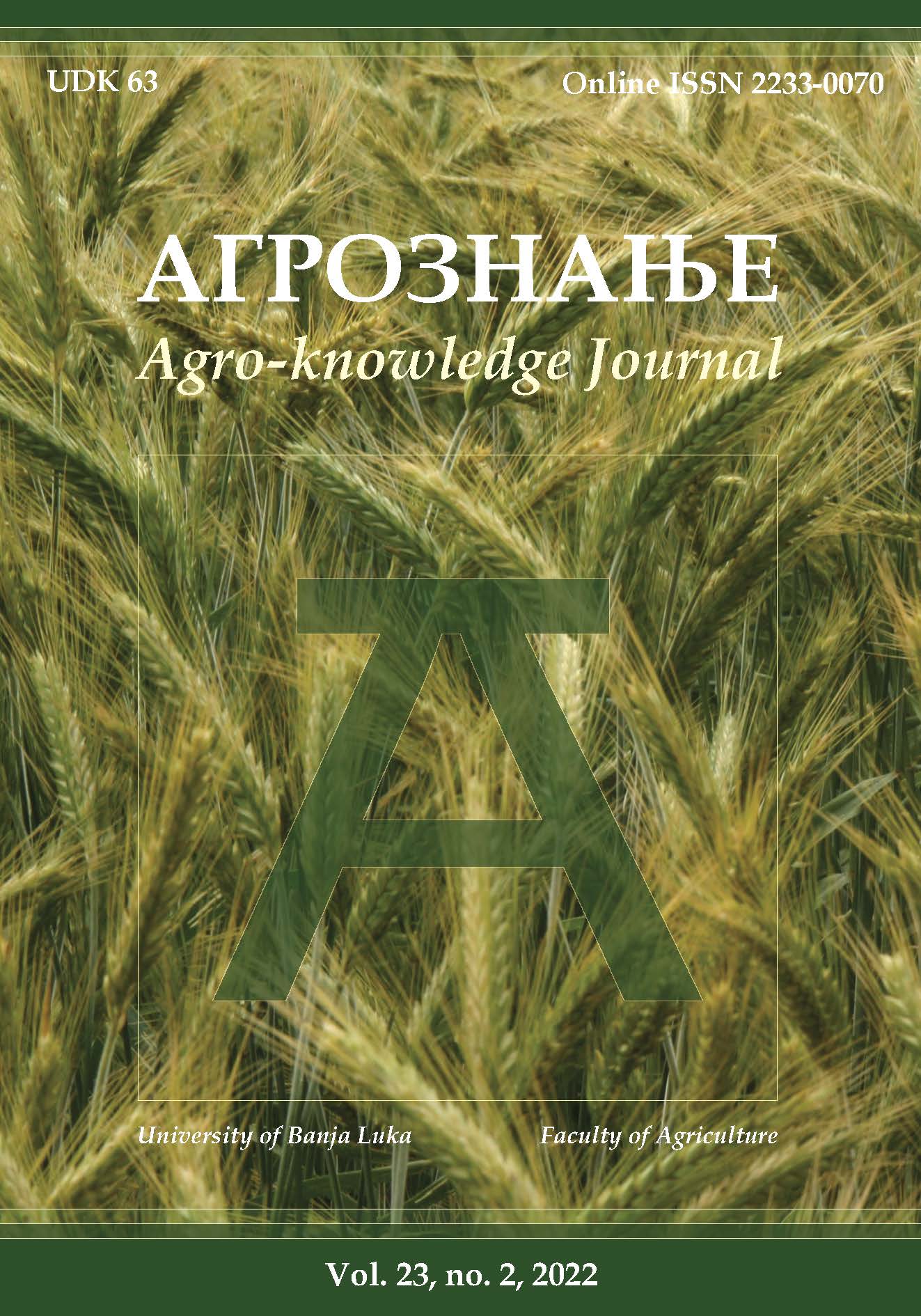Radionuclide contamination and nutritional evaluation of the wheat mostly used in the Republic of North Macedonia
Контаминација радионуклидима и нутритивна евалуација најчешће коришћене пшенице у Републици Сјеверној Македонији
DOI:
https://doi.org/10.7251/AGREN2202067AAbstract
Wheat is one of the world’s most commonly consumed cereal grains. It originates from a type of grass (Triticum) that is grown in countless varieties worldwide. Bread wheat or common wheat is a primary species. Several other closely related species include durum, spelt, emmer, einkorn, and Khorasan wheat. In addition to being a major source of starch and energy, wheat also provides substantial amounts of a number of components which are essential or beneficial for health, notably proteins, vitamins (notably B vitamins), dietary fibres, and phytochemicals. Wheat is a basic food product of Macedonian population. This study is mainly focused on measuring the concentration of radioactivity due to natural radioactive nuclides (226Ra, 232Th, 40K) in wheat grain samples, as well as on determining the quality of wheat used in daily diet. In addition, in this study we calculated radiation hazard indices (radium equivalent activity and internal hazard index) in the wheat sample. Average activity concentrations of 226Ra, 232Th, and 40K in the wheat samples were 0.57±0.14; 0.39±0.11; 96.55±0.86 (Bq·kg-1), respectively. The radiation hazard indices were calculated for all samples in this study where mean values did not exceed safety limits, pointing out to negligible radiation hazard arising from terrestrial radionuclides that are naturally present in wheat. In terms of quality, we confirmed that all tested samples meet the requirements regarding quality in accordance with the laws in our country.
Key words: radioactivity in wheat, radionuclides, gamma spectrometer, quality control

